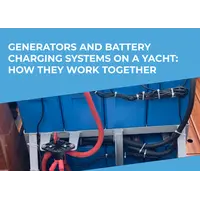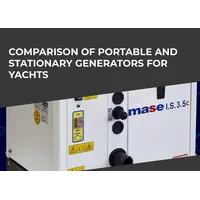Some reviews of the best fish finders for fishing can be confusing because they simply offer a list with a brief enumeration of advantages. In this guide, topRik experts explain in detail how to choose an echo sounder model that will fully meet your needs, your fishing method, as well as the design and dimensions of your boat or yacht when it comes to onboard fishing.
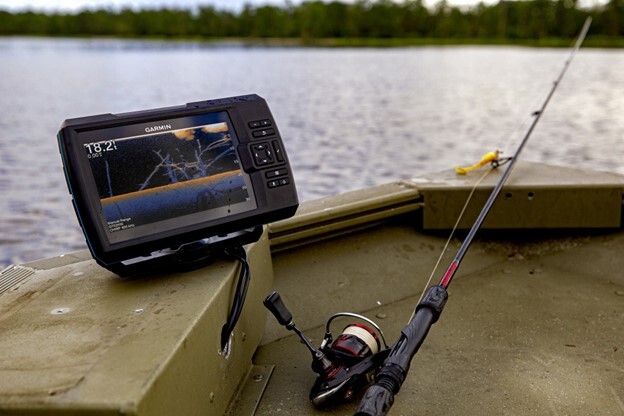
As you read the article, we recommend that you browse the section of our marketplace, which presents a variety of echo sounder models from the best manufacturers of navigation equipment - Garmin, Lowrance, Simrad, Furuno, Raymarine, etc. There you can easily find something you like, since we have have a selection of echo sounders for all occasions. And it is precisely these real-life situations that our experts’ recommendations are devoted to – from functional features to differences in cost.
When choosing an echo sounder, first of all you need to decide where and for which purpose the selected echo sounder will be used. There are echo sounders for fishing from the shore; there are specially designed sonars for winter fishing that can operate at low temperatures; and, naturally, the bulk of the assortment consists of echo sounders for fishing from a boat or yacht. Today there are many types of echo sounders with different options and subtleties. To choose the right echo sounder, you first need to understand its functionality and understand which option serves what, so as not to overpay extra money for something you don’t need.
An echo sounder is a device operation of which is based on the principles of echolocation. For a fisherman, it is interesting primarily because it allows you to study the depth, bottom topography, and even the presence of fish in the water column underneath. Such information undoubtedly gives a huge advantage and allows you not only to better navigate the waters, but also to more effectively study the behavior of fishing objects.
The operating principle of any echo sounder is that the device sends an ultrasonic pulse into the water, which, upon reaching any obstacle, is reflected and returned to the transducer. The more time passes between sending and receiving the reflected signal, the deeper is the obstacle from which it was reflected. By analyzing these delays, a picture on the screen that is more understandable to our eyes is formed.
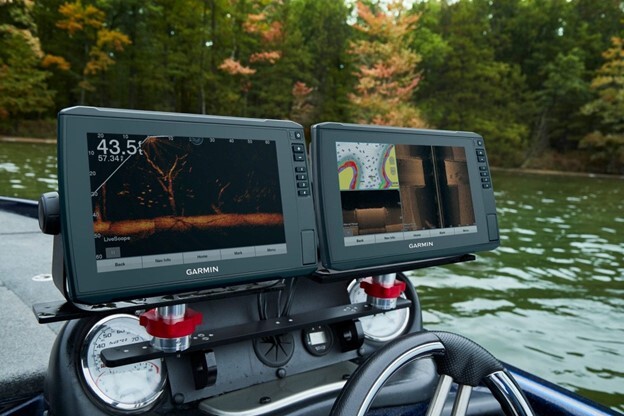
Basic Functions of Echo Sounders for Fishing
Let's take a quick look at how sonars perform their main functions:
- depth measurement;
- identification of fish schools and individuals in the water space;
- determination of bottom relief;
- displaying all of the above information on the screen in real time.
As already reported, the echo sounder sensor emits a narrowly directed ultrasonic signal into the water and receives a reflected signal back from floating objects, fish and the bottom surface. The device processor processes and displays the received information on the screen. Almost all echo sounders produced today allow you to determine the current depth, display the bottom topography on the screen, show the presence and depth of fish, roughly estimate its size.
Such devices allow the fisherman to zoom in on any area of the water column of interest for a more detailed view.
Depth Detection
The signals emitted by an echo sounder can be represented as a beam of probes. Each of the narrow ultrasonic “probes” propagates in the water until it collides with an obstacle, which is the boundary of media with different densities, for example, “water-fish”, “water-stone”, “water-air”, etc.
The probe breaks against this obstacle, and its energy is dissipated in all directions. Some of this scattered energy reaches the sonar sensor and is recorded. The echo sounder records the distance at which the obstacle is located and the strength of the reflected signal. A column with a depth scale is formed on the right edge of the echo sounder screen and a stroke is drawn at a fixed distance.
Fish Detection
On the echo sounder screen, fish are shown as arcs. There is also a “Fish Icons” feature, but we think it is intended for novice anglers, and it might cause errors: the fish icon can be displayed on passing debris. Of course, by adjusting the sensitivity and power you can minimize the appearance of an unwanted object, but it is still possible. Therefore, professionals identify fish by arcs, and this is not as difficult as it seems at first glance.
We have already talked about how the echo sounder sensor works. The device sends pulses, which, when reflected from an object, are converted into a picture on the screen. Each echo sounder has a specific algorithm for the movement of objects, by which it recognizes the presence of fish.
It should be understood that an echo sounder is intended primarily to determine the location of fish; it is not a camera that shows in real time what is happening in the water column. Therefore, any angler knows that if you study the structure and density of the bottom and choose the right fishing point on the device screen, this will be the key to success. But still, we want to see the presence of fish, and even better, their bite.
The size of the fish can be determined by the size of the arcs. Bright, wide arcs show a larger fish, and thin arcs, naturally, show smaller ones. And if the screen is full of such arcs, then you are lucky and you have stumbled upon a large concentration of fish. By the number and size of these arcs we determine the presence of fish.
When searching for fish, be aware that they are in motion - arcs may appear and disappear on the screen. This happens especially often when catching a predator.
The reason the fish appears as an arc on the fish finder screen is because of the relative movement of the fish and the cone angle of the transducer as the boat passes over the fish. The length of the arc on the screen, from one end to the other, has nothing to do with the size of the fish, but only indicates the time the fish spent in the cone of the emitted acoustic signal.
As soon as the leading edge of the cone hits the fish, a pixel is displayed on the sonar screen. As the boat moves over the fish, the distance to it decreases. This results in each subsequent pixel appearing higher on the screen than the previous one. When the center of the cone is directly above the fish, the first half of the arc is formed. This place is the shortest distance to the fish. Since the fish are closer to the boat, the signal is stronger and this part of the arc is thickest.
As the boat moves away from the fish, the distance increases and the pixels appear deeper until the fish moves out of the cone. If the fish does not pass directly through the center of the cone, the arc will not be drawn. Since the fish is not in the cone for very long, there are not many pixels displaying it on the screen, and those that are present are weaker. This is one of the reasons why it is difficult to show the arches of a fish at the surface of the water. The conical angle is too narrow to produce an arc.
Determination of Bottom Structure
The pulse sent by the echo sounder sensor is reflected from various objects that it encounters on its way, or the bottom. This allows you to collect information about everything that is in the water column: the number, size, density of objects, and the structure of the bottom. The display processor processes the received information, resulting in a moving graphic image being displayed on the screen. Because signals are sent and received many times per second, a continuous line is drawn on the screen to indicate the bottom.
Hard, flat ground reflects echoes like a mirror. The scanning pulse reaches the bottom almost instantly, and echoes from various parts of the soil also return almost instantly back to the surface. The received echoes are mainly attenuated copies of the short pulses sent.
Echoes from sloping ground are characterized by longer duration and slower rise and fall. The scanning pulse first reaches the slope at point A, and after a period of time the reflection site moves along the slope towards point B. Hard and durable soil does not produce many reflections.
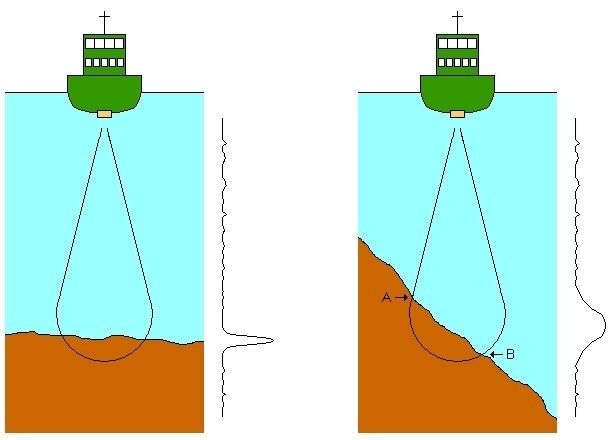
Often the soil consists of layers of silt, clay and sand, which appear as colored stripes on the echo sounder display. Experienced fishermen, knowing the features of the bottom topography, can identify potential places for successful fishing. They assign 30% of success in fishing to knowledge of the topography of the bottom of the reservoir, which helps to determine the habitat and feeding areas of the fish. And only after that 30% is allocated to the weather factor.
The remaining 40% is distributed between gear, bait and the luck of each individual fisherman.
Types of Echo Sounders for Fishing
The pulses sent by the echo sounder can be of different frequencies - 60 Hz, 83 Hz, 200 Hz, etc. In water, a sound wave is most easily described as a cone, which has a certain angle - the higher the frequency, the narrower the “beam”. Without delving into complex mathematical models, the angler should understand two simple things. A beam with a higher frequency provides a more detailed image of the surface and objects in the water column, but at the same time captures a smaller area. Low-frequency beams, on the other hand, have a wide coverage but produce less detail. It is also worth considering one more property - the lower the frequency of the signal, the deeper it can penetrate into the water column.
Traditional Echo Sounders (Sonars)
Echo sounders (sonars) come in single-beam and double-beam types. The simplest ones are single-beam echo sounders. When choosing such an echo sounder, you should decide on the goals and tasks that the device will perform. If accurate and detailed information about the structure of the bottom is important to you, then you should pay attention to echo sounders with a narrow and high-frequency beam. If the purpose of the echo sounder is to detect fish under the boat, then it is better to give preference to devices with a wider beam and low frequency.
Much more convenient, but also more expensive, are double-beam echo sounders. Such sonars have two beams with different frequencies, and on the screen you can see the result of their combined action - a clear bottom and a wide range of objects in the water column.
At the moment, almost all echo sounders are equipped with an intelligent fish recognition function. Despite the fact that algorithms are constantly being improved, you should not trust this information one hundred percent. Very often, devices mistake thin tree branches, floating debris, etc. for fish.
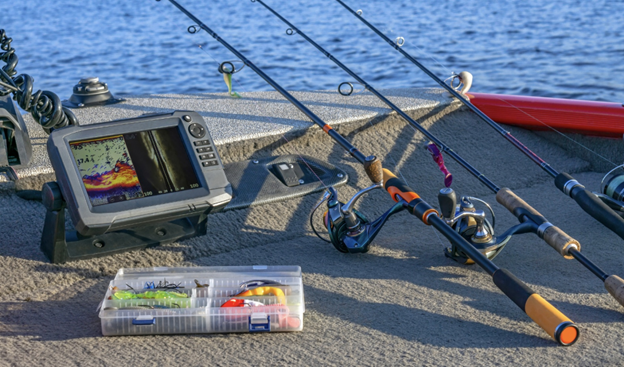
Scanning Echo Sounders
Echo sounders with a bottom scanning function have appeared on the fishing market relatively recently. The principle of their operation is somewhat different from classic sonar. The sensor of such an echo sounder contains a special piezoelectric element, which acts as an emitter and receiver. It is capable of sending a large number of high-frequency pulses, as if scanning the water space. Those. Instead of one beam, as in a classic sonar, the same area is penetrated by several narrower ones. As a result, we get a super detailed image of everything that happens under water. It is often possible to see not just a tree lying at the bottom, but also small fish standing under it or in its branches.
The names of such echo sounders from leading manufacturers contain the word “Down”: DownScan Imaging (Lowrance), DownVision (Raymarine), DownVü (Garmin).
Echo sounders with side scanning function are the next stage in the development of sonars. In the sensors of such echo sounders, the rays are directed not only down under the boat, but also on opposite sides of it. This made it possible to scan the bottom to the left and right of the boat for tens of meters. And the use of side rays together with the bottom one gives the most complete picture.
Here, just like in classic echo sounders, there are two main frequencies: 455 kHz and 800 kHz. The general principle is the same - the higher the frequency of the beam, the more detailed image we will get, and the lower, the more space we will capture. The model names contain the word “Side”: SideVü for Garmin and SideVision for Raymarine, with the exception of StructureScan for Lowrance.
One point is worth noting here. The point is that you need to understand the main difference in the operating principles of a classic sonar and a scanner. If you imagine the projection of a sonar beam on the bottom, it will be a circle, the diameter of which depends on the angle and depth. The projection of the rays of the scanning echo sounder is a narrow strip. In order to cover the same area, a boat with a scanning echo sounder will have to move. The analogy of a scanner beam scanning the surface of a sheet works well here.
Six-beam 3D scanning technology is another revolutionary breakthrough that allows you to display the three-dimensional topography of the bottom. Against the background of a three-dimensional display of the bottom, the location of the fish is clearly visible. Following the pioneer, almost all leading manufacturers of such systems began to produce echo sounders with 3D technology. Modern 3D echo sounders already use more than a hundred beams. 3D echo sounders are presented in the lines of this equipment from Garmin, Lowrance, Simrad, Raymarine, which is easy to see in the corresponding section of the topRik marketplace. The use of 3D technology, along with other scanning technologies, provides a huge advantage in finding fishing spots.
Wireless Echo Sounders
Unlike on-board models, a wireless echo sounder is a compact device that does not take up much space in your backpack, but at the same time makes it possible to significantly improve your fishing results.
It is usually shaped like a ball, slightly larger than a tennis ball, and is thrown into the water with a fishing rod. It does not have a display, but the image is transmitted to your smartphone via Bluetooth or Wi-Fi . The sensor itself (transducer) in most wireless echo sounders is located on the fishing rod.
The tasks that such an echo sounder solves can be very different.
- Intelligence service. Finding a new promising place is always interesting, but sometimes it takes a very long time. On a new body of water, it's worth spending a few minutes scanning the bottom with your echo sounder and you'll have a basic idea of what awaits you.
- Point search. In the hot summer months, very often the fish “stands on the terrain” - and to get bites you need to throw the tackle exactly to the edge, hole or “table”. In principle, you can always “tap” the bottom and determine the relief using the cord - but with the help of an echo sounder the search will be faster and more accurate. In summer, ponds can become very overgrown. Tapping the bottom in this case is a very difficult task. But the echo sounder perfectly shows the relief and spots of clear water between underwater vegetation.
- Search for fish. Even proven points may be silent - therefore, before starting fishing, you should use an echo sounder to make sure that there is fish in this area at all. The use of modern echo sounders with high accuracy will allow you to detect not only large schools, but also individual specimens - this is very helpful when catching summer pike or hunting for catfish.
- Creating a map of a water body. If you have enough time for frequent fishing, then using an echo sounder with software will give you the opportunity to quickly get a map of the reservoir with all promising points. Then we quickly find the desired coordinates using GPS and begin fishing.
Cost, versatility, compactness - all these characteristics can be considered an advantage. But wireless models are used mainly in closed reservoirs, but they can be used both from board (less often) and from the shore (mostly), both in winter and summer.
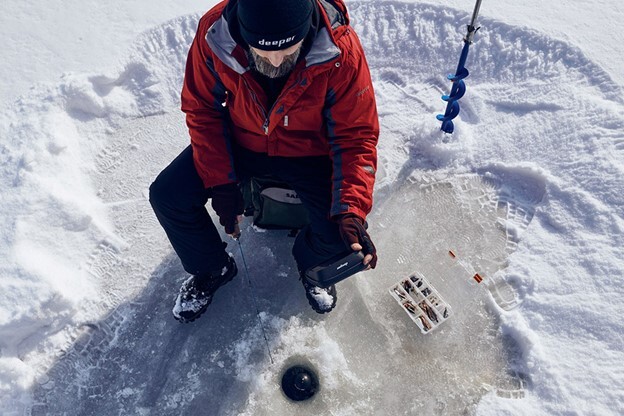
Combo Devices (Echo Sounder + GPS)
The advantage of integrated systems is that they enhance each other's capabilities. The same applies to sonar, which is combined with a GPS sensor. A striking example of such integration is 360 Imaging technology, which allows you to make a 360-degree view of the underwater world within a radius of 45 meters.
The uniqueness of the technology lies in the fact that, unlike other technologies, the review is carried out from an anchored boat or yacht. The technology is based on circular scanning with Side Imaging technology, which we mentioned above. The design includes a high-precision GPS sensor with a compass, which allows you to obtain the orientation of the boat relative to targets.
An important feature of the technology is that it allows the echo sounder to be used as a forward-looking echo sounder with a scanning angle from 10 to 360 degrees. At the same time, the speed of the boat is up to 13 km/h. Such combo devices are widely used for fishing, search work, and bottom exploration.
Criteria for Selecting an Echo Sounder
Before you go to the echo sounder sales section of our supermarket, you will have to formulate your requirements for this device. This list may include various parameters, but there are basic characteristics that you should focus on first.
Screen Resolution
A very important characteristic of an echo sounder is the quality of the screen - its size, resolution and number of colors. The greater the number of pixels and the larger the screen, the more accurately the contours of the observed objects are depicted, the finer details are available for observation, and the better the observed objects are resolved (separated) - bottom contour elements, algae, snags and fish.
In addition to the resolution, the screen is characterized by the number of colors. Modern black and white screens reproduce 10 or more shades of gray. This allows not only to divide objects into conditionally “hard” and “soft” according to the black or light gray color (one shade) of their images, but also to understand complex situations when the bottom surface, boulders, vegetation, fish and etc.
This is achieved thanks to the individual shade of color of each of the observed objects. But if a black-and-white multi-shade image only allows you to distinguish between objects of different densities, then a color image makes these differences significantly more detailed and contrasting.
Transducer Power
An important characteristic is the radiation power. To ensure a real possibility of detecting fish in a wide cone (50-60 degrees) at small and medium depths, a signal power of at least 600 W is required.
The signal processing procedure is no less important. This procedure, unfortunately, cannot be checked when purchasing an echo sounder. But on a pond, you can test your echo sounder in a simple way: even the cheapest modern fishing echo sounder should clearly detect a 2-3 cm spoon at a depth of 5 meters, and at a 3-meter depth a medium-sized jig should be noticeable.
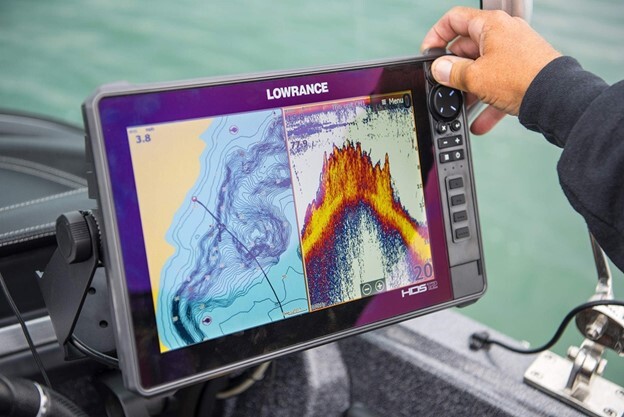
Operating Frequency
The higher the frequency of the signal sent by the echo sounder sensor, the clearer the image on the display, but the smaller the capture area. The device can have from one to five beams with frequencies ranging from 50 to 1200 kHz.
For fishing from a boat without a motor, a single-beam echo sounder at 83 kHz is sufficient. On a large lake you will need at least two beams at 83 or 200 kHz.
When fishing at sea, it is better to choose echo sounders with three beams at 83, 200 or 800 kHz. More than three may be needed when catching schools of fish. There are also wide and narrow beams. The narrow one is needed to display the structure of the bottom, and the wide one is needed to find fish and clarify the relief.
Sensor Types
We described in detail the differences between echo sounders with single-beam, multi-beam and 3D sensors above, in the section on types of echo sounders. Here we will focus on which of these types to prefer in different fishing conditions.
The most inexpensive solution is hand-held echo sounders with a single-beam sensor. Despite the fact that most of them are positioned as “winter”, no one will forbid you to use them in the summer. You just have to figure out how to attach the sensor to your boat. You will get an inexpensive and universal solution.
If you are ready to spend a little more money and you are not interested in using the device in winter, then you should opt for two-beam echo sounders. When choosing, pay attention to the angles and frequencies of the rays. If you need an echo sounder, for example, to catch bream or tuna, then give preference to the device where the beams have the maximum width - this is more convenient when searching for schooling fish. If you fish with a jig or wobblers along the terrain, then choose an echo sounder with narrower and high-frequency beams - such a device will show the details of bottom anomalies much better.
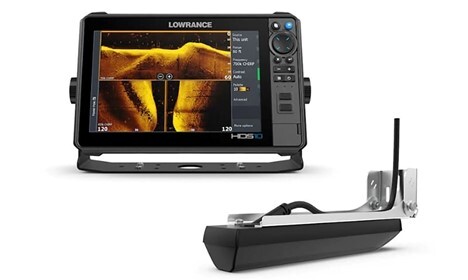
Additional Functions of Echo Sounders
Modern fish finders integrate well with other systems that expand the capabilities of sonar, if they are not already built into the device.
CHIRP Technology
Separately, it is worth mentioning sonars with CHIRP technology. The principle of its operation is to send pulses in batches, which allows for much better and more accurate identification of objects from the general noise. The picture on such devices is more detailed and with less noise, you can easily distinguish individual fish in a school, recognize a fish or a school of fish in thickets or near the very bottom, distinguish large fish from smaller ones, etc.
GPS and Navigation Functions
An echo sounder with a GPS module will be useful for those who like to fish in large areas. In addition to navigation, it allows you to mark fish concentration areas on the map so that you can return again, for example, with new bait or tackle. With its help, you can simply devote part of your time to searching for “fishy” places, marking them on the route and then return and do what you love without being distracted by searching for fish.
The navigator can also help you find your way during fog or after sunset, when it is physically difficult to determine the path.
Wi-Fi and Bluetooth Connection
Our contemporaries will no longer be surprised by the possibilities of wireless connection and control of, say, household equipment from a smartphone. But, unfortunately, few fishermen who fish from the shore have mastered this opportunity to improve the quality of their hobby. As we wrote above, even simple wireless echo sounders give you the opportunity to monitor conditions at depth using your smartphone.
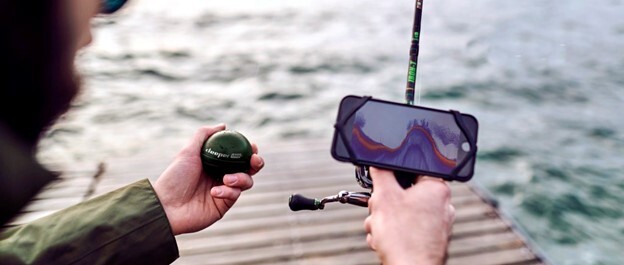
The fish size detection function will be useful when catching large catfish or pike. It will allow you not to waste time catching small fish.
An echo sounder with a temperature sensor will help determine the favorable water temperature for the desired fish species.
Recommendations for Choosing an Echo Sounder Depending on Fishing Conditions
You should buy an echo sounder, taking into account the upcoming type of fishing - from a boat or from the shore, winter or summer, in the sea or fresh water, in shallow water or in deep water...
Fresh Eater vs. Salty Eater
In the characteristics, manufacturers indicate the operating depth of the echo sounder for use in fresh water. It should be remembered that in sea water the signal propagates much worse. It is impossible to provide exact data, because the salinity of water is different everywhere. Mid- and high-end echo sounders have signal settings for fresh and sea water. In any case, you should remember - the greater the power of the echo sounder, the better the image and detail on the screen.
Sea Fishing vs. Shallow Water
For fishing from the shore, that is, in shallow water, portable echo sounders of various designs are suitable. They are small in size and easily fit into a bag or pocket. Operates on batteries or accumulator. The advantages of such echo sounders are ease of operation, compactness and lightness. They accurately indicate depth, have a temperature sensor, have the ability to magnify the image, and the body is protected from moisture. Some models, like stationary echo sounders, show the size of the fish. Cons: small screen and modest functionality.
For fishing from a boat, that is, at significant depths, stationary echo sounders are suitable. They have special fastenings for fixation. The sensor is located on the bottom or bow of the vessel. Power is supplied from a 12 V network.
Stationary echo sounders are usually large in size and weight, so they are used only when fishing from a boat. Such models are used extremely rarely for the shore: they are heavy and do not fit in a pocket. These fish finders have a large viewing screen and are equipped with special functions: for example, they show the size of the fish and the speed of its movement. Echo sounders of this type are powerful, used in large bodies of water or at sea - they are capable of tracking fish at speed and great depth. They have a high-quality image, the ability to enlarge the picture and also record depth and temperature.
Therefore, when choosing the depth of echolocation, you need to start from the body of water where you plan to fish. If this is a small reservoir, then a depth of 25 meters will be sufficient. If this is a lake, then most likely there will be depressions and depressions, so it is better to take an echo sounder with an echolocation depth of 35-80 meters. In the sea, you will need an echo sounder with a maximum depth of 300-1500 meters if you want to catch large fish.
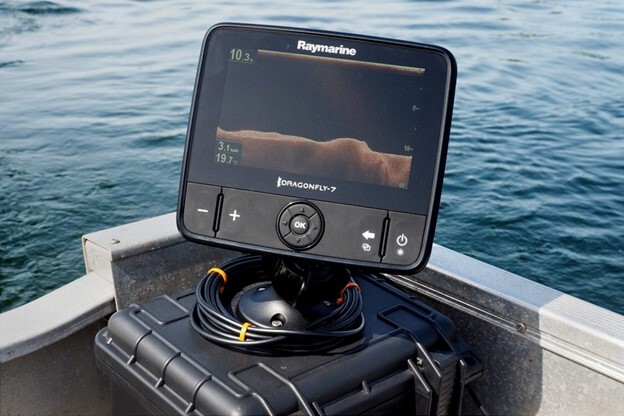
Summer Fishing vs. Winter Fishing
Fans of ice fishing are advised to check the permissible operating temperature range of the echo sounder. And also make sure that the proposed power source can be used at subzero temperatures.
If you plan to use an echo sounder for ice fishing or from a small, for example, inflatable boat, it is recommended that when purchasing, you get advice on a portable echo sounder for the specific method of its use.
A device with a flasher allows you to see the tackle and the fish swimming towards it, which is important for winter fishing.
Where and How to Install the Sensor for Best Scanning
An echo sounder consists of two main parts - a transducer (sensor) and a display. However, there are many models of echolocation sensors on the market without a monitor, since many modern models of multifunction displays (MFD chartplotters) support displaying data received from the transducer.
The emitter sensor is installed on the bottom of the vessel below the waterline and is directed straight down – it sends the signals and receives them after reflection from the bottom or other objects encountered along its path. Data from the sensor is processed and displayed on a special display - included in the delivery kit or any other kit compatible with the transducer used.
When installing an echo sounder sensor, it is necessary to exclude the possibility of signal shielding and damage to the transducer itself by the yacht’s structures.



